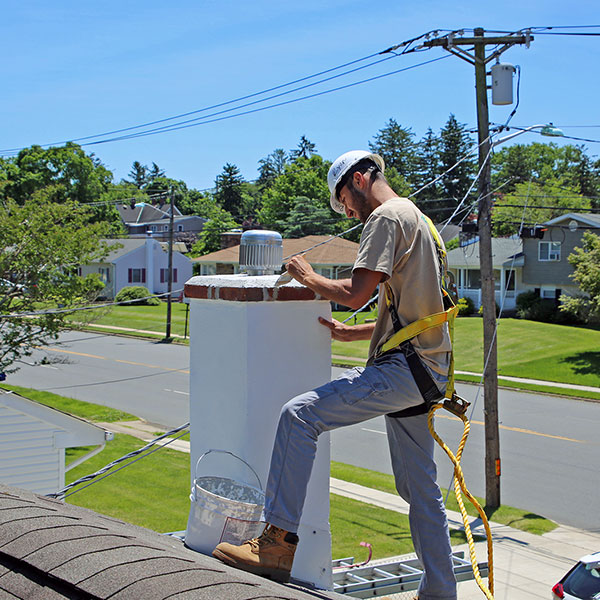5 Common Chimney Repairs Homeowners Need During the Off-Season
Your chimney may look indestructible, but it will need repairs from time to time. Chimney problems do not get better over time. Ignoring chimney problems can also compromise the chimney’s integrity and increase the risk of fire and carbon monoxide exposure. Making timely repairs during the off-season prolongs its lifespan minimizing the need for more extensive repairs later. Below are five common chimney repairs that homeowners need during the off-season.
 Masonry
Masonry
It is very common for homeowners to need some masonry repairs in the off-season. After a long winter, the freezing rain, snow, and ice that sticks to the exterior brick surface of the chimney soak into the porous material. The constant melting and re-freezing throughout the winter cause bricks to crack or spall. It also erodes the mortar leaving gaps in the joints. As the spalling continues, the bricks can split and separate from the chimney. Experienced chimney masons use tuckpointing to repair the masonry. The masons will use durable bonding material to fill in the gaps in the bricks and mortar joints. It is color-matched to the existing brickwork restoring the chimney to a like-new appearance.
Chimney Cap
The chimney cap covers the flue to help prevent water leaks in the chimney. It is not unusual for the cap to be damaged or blown off the roof entirely in a severe storm. Without a chimney cap, the flue is exposed to the elements. In addition to water intrusion, small animals, pests, and debris can clog the flue obstructing the vent.
So, replacing a damaged or missing chimney cap should be a priority during the off-season. Many chimney caps have a mesh screen that will help keep pests and debris out of the flue to prevent obstructions. A spark arrestor feature is also a necessity to prevent hot embers from sparking a fire.
Chimney Crown
The cement surface of the chimney crown may also need repair during the off-season. The effects of winter weather can cause cracks to develop in the chimney crown and allow water to leak inside the chimney. It can be a serious issue because water leaks can damage the interior masonry walls surrounding the flue. A chimney mason will use patch cement to fill in the surface cracks and sealed with a waterproof sealant. However, when there is significant damage or deterioration to the chimney crown, it will need to be re-built.
 Flue Liner
Flue Liner
Most chimneys have clay tiles lining the flue. The liner protects the masonry from the high heat of the fireplace and helps prevent it from spreading to combustible materials. The extreme heat of the fire, combined with the corrosive gases of combustion, can cause the tiles to crack. So, it’s relatively common that some of the clay tiles will need to be repaired or replaced after the winter season.
Waterproofing
Water damage can be very destructive to the chimney’s integrity, which is why homeowners use the off-season to waterproof their chimney. The key to waterproofing the chimney is using a vapor-permeable sealant that allows the masonry to breathe, preventing further deterioration. However, it is essential to make masonry repairs first; otherwise, waterproofing will not be very effective. Also, the waterproof sealant will need to be re-applied every few years for maximum protection.



